Discover Ha Giang, Vietnam’s last frontier, where breathtaking limestone peaks, remote ethnic villages, and thrilling mountain passes create an unforgettable adventure far from the usual tourist trail. From the epic Ma Pi Leng Pass to serene Du Gia Village, this is Northern Vietnam at its rawest and most authentic.
TABLE OF CONTENTS
1
Why Ha Giang Should Be on Your Vietnam Bucket List
The Final Frontier of Northern Vietnam - Rugged, Remote, and Remarkable
What Makes Ha Giang Unique Compared to Sapa or Ninh Binh
Who Should Visit: Adventurers, Culture Lovers, and Motorbike Explorers
2
1. Dong Van Karst Plateau Geopark
UNESCO-Protected Natural Wonder
Explore Limestone Mountains, Caves, and Ethnic Villages
3
2. Ma Pi Leng Pass
Vietnam’s Most Iconic Mountain Road
Views Over the Nho Que River That Leave Travelers Speechless
4
3. Lung Cu Flag Tower
The “North Pole” of Vietnam - A Symbol of National Pride
Panoramic Views of China-Vietnam Borderlands
5
4. Meo Vac Town
Heart of the Hmong Highlands
Traditional Markets, Sunday Gatherings, and Cultural Performances
6
5. Quan Ba Twin Mountains (Fairy Bosom Hills)
A Natural Wonder Wrapped in Local Legend
Great Stopover with Stunning Photography Opportunities
7
6. Du Gia Village
Best Homestay Experience in Ha Giang Province
Waterfalls, Rice Fields, and Peaceful Ethnic Life
8
7. Hmong King’s Palace (Vuong Palace)
Step into the Former Royal Home of the Hmong Lord
A Blend of French-Chinese-Hmong Architecture and History
9
8. Nho Que River and Tu San Canyon
Hidden Gem for Boat Trips and Kayaking Below Ma Pi Leng
One of Southeast Asia’s Most Dramatic River Gorges
10
Travel Tips for Visiting Ha Giang
When to Go: Best Seasons for Weather and Festivals
How to Travel: Motorbike Loop vs. Car Tour
Where to Stay: Eco-Lodges, Homestays, and Town Guesthouses
11
Final Thoughts: Is Ha Giang Worth the Journey?
A Rewarding Destination for Curious and Courageous Travelers
Combining Ha Giang with Sapa or Cao Bang for the Ultimate North Vietnam Tour
Why Ha Giang Should Be on Your Vietnam Bucket List
The Final Frontier of Northern Vietnam - Rugged, Remote, and Remarkable
Ha Giang is often referred to as Vietnam’s last frontier - a land where limestone mountains stretch into the clouds, truly one of the best places to visit in Vietnam for those seeking raw beauty and cultural authenticity, winding roads trace along towering cliffs, and the cultural rhythm of ethnic minorities remains largely untouched by tourism. Located near the Chinese border, Ha Giang offers raw, authentic landscapes that feel worlds apart from the polished paths of Sapa or Halong Bay. It’s a place for those who seek adventure and want to connect with something real.
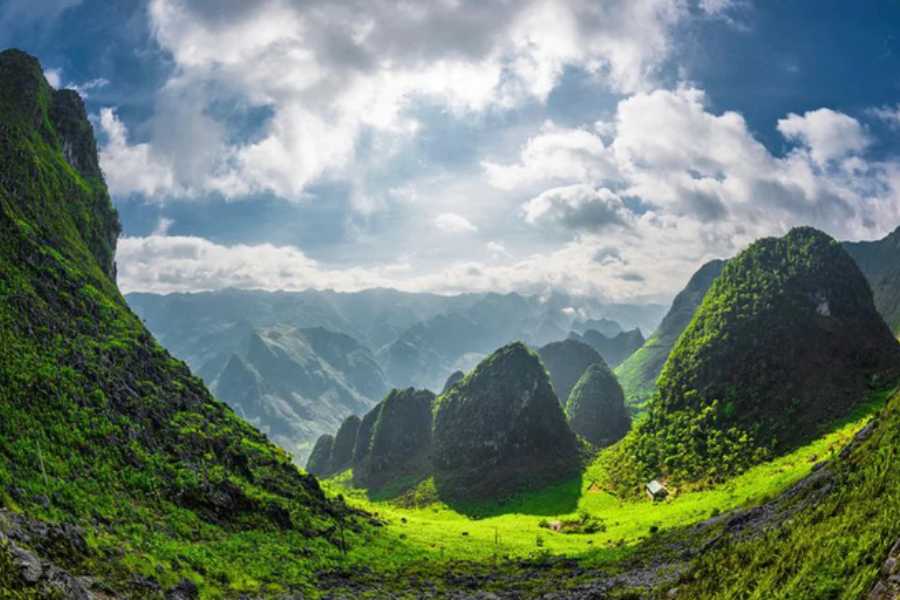
What Makes Ha Giang Unique Compared to Sapa or Ninh Binh
While Sapa draws large crowds for its rice terraces and Ninh Binh for its cinematic karst landscapes, Ha Giang combines both - and more - with far fewer visitors. What sets it apart is the intensity of its scenery. The Ma Pi Leng Pass, for example, is not just beautiful - it’s jaw-droppingly dramatic. Villages here are more remote, cultural traditions more preserved, and encounters with locals more meaningful. Expect less commercialism and more soul. It remains one of the most remarkable hidden gems in Vietnam, still untouched by mass tourism.
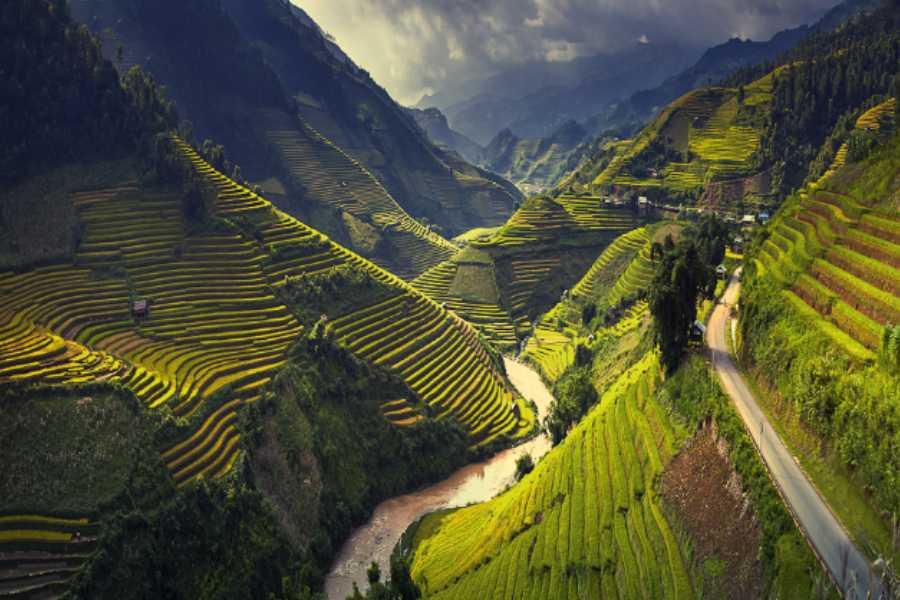
Who Should Visit: Adventurers, Culture Lovers, and Motorbike Explorers
Ha Giang is ideal for travelers who are ready to go beyond the usual itinerary. It’s not for those seeking resorts or nightlife - instead, it caters to road trippers, photographers, culture seekers, and anyone craving nature in its most untamed form. If you’re comfortable on a motorbike, the Ha Giang Loop is Vietnam’s most iconic ride. Even if you’re not, hiring a local driver (“easy rider”) makes it possible to explore safely and fully.
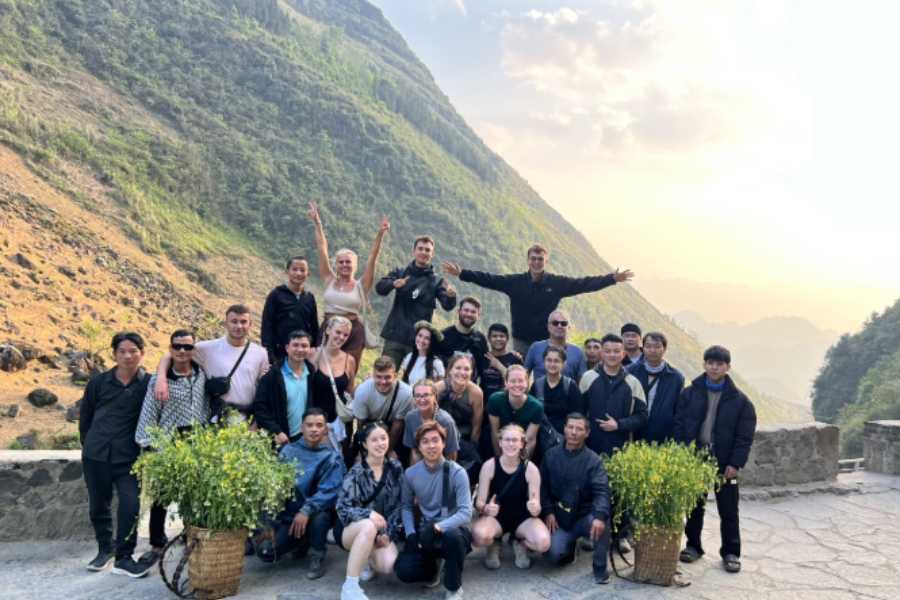
1. Dong Van Karst Plateau Geopark
UNESCO-Protected Natural Wonder
Dong Van Karst Plateau is one of Vietnam’s most remarkable natural treasures, officially recognized by UNESCO as a Global Geopark. Stretching across four districts - Meo Vac, Dong Van, Yen Minh, and Quan Ba - this vast, rugged landscape is formed almost entirely of ancient limestone, some of which dates back over 400 million years. It offers not only breathtaking geological formations but also deep cultural significance, as it is home to over 17 different ethnic groups.
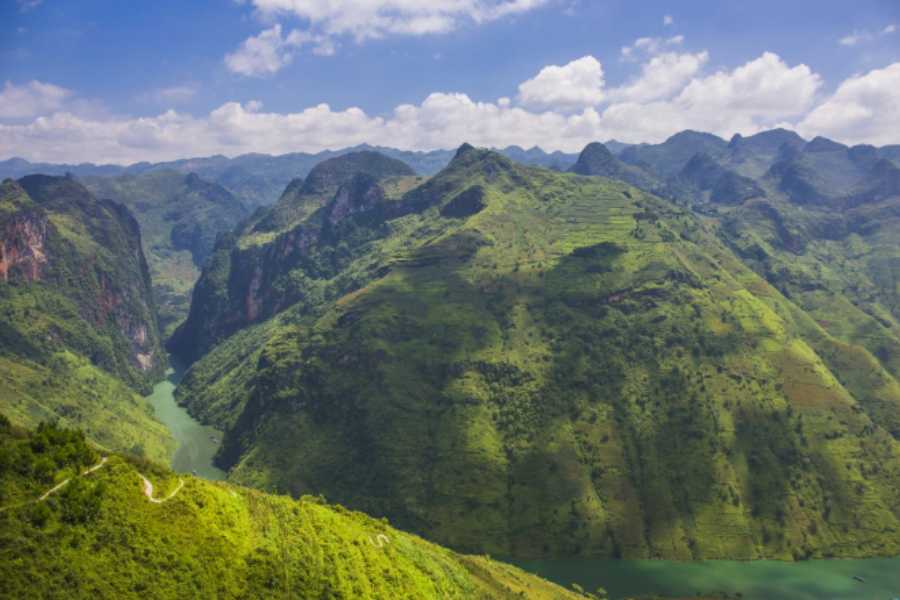
Explore Limestone Mountains, Caves, and Ethnic Villages
The Geopark’s terrain is dramatic and raw, with jagged peaks, narrow valleys, and maze-like rock formations that feel otherworldly. You can visit Lung Cu Flag Tower, hike through mountain trails that cut through cliffside cornfields, or stop by hidden villages like Sung La, known for its traditional Hmong architecture and flower gardens.
Don’t miss:
- Vuong Palace: Former residence of the Hmong king - a mix of Chinese, French, and Hmong architecture.
- Sung La Village: A picturesque Hmong community famous for its blooming buckwheat flowers in autumn.
- Lung Khuy Cave: A beautiful limestone cave with dramatic stalactites and an accessible trekking path.
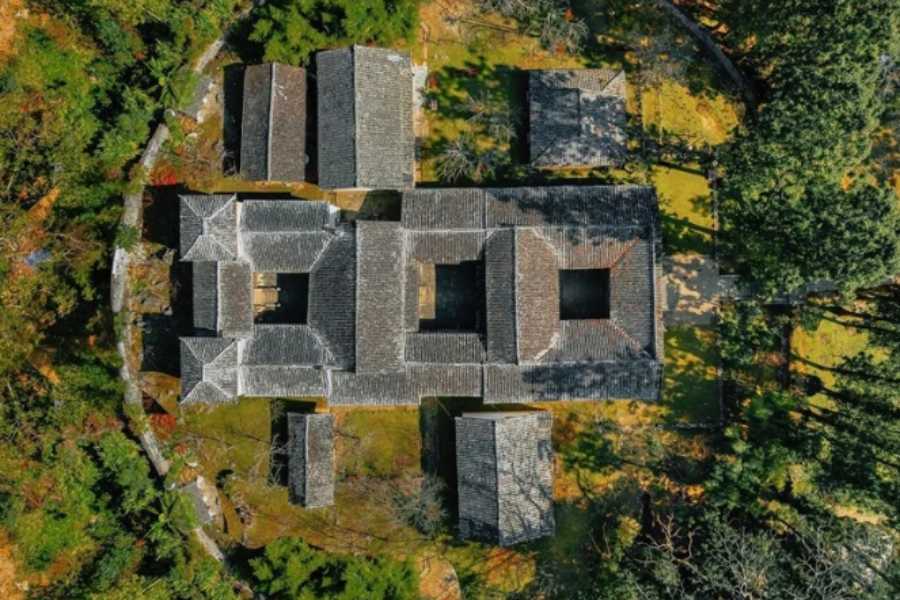
Traveling through this geopark means experiencing not just epic landscapes, but living culture - where markets, houses, and daily life unfold within the stone walls of northern Vietnam.
2. Ma Pi Leng Pass
Vietnam’s Most Iconic Mountain Road
Ma Pi Leng Pass is often called the “king of Vietnam’s mountain passes” - and for good reason. Carved into the cliffs of the Dong Van Karst Plateau, this 20-kilometer stretch of road between Dong Van and Meo Vac winds along steep mountainsides at dizzying altitudes. Originally built in the 1960s by the hands of ethnic minority laborers, Ma Pi Leng is not just an engineering marvel - it’s a rite of passage for any traveler exploring Ha Giang by motorbike.
Expect hairpin turns, narrow ledges, and heart-stopping drops - but also pure exhilaration. It’s where adventure meets raw beauty.
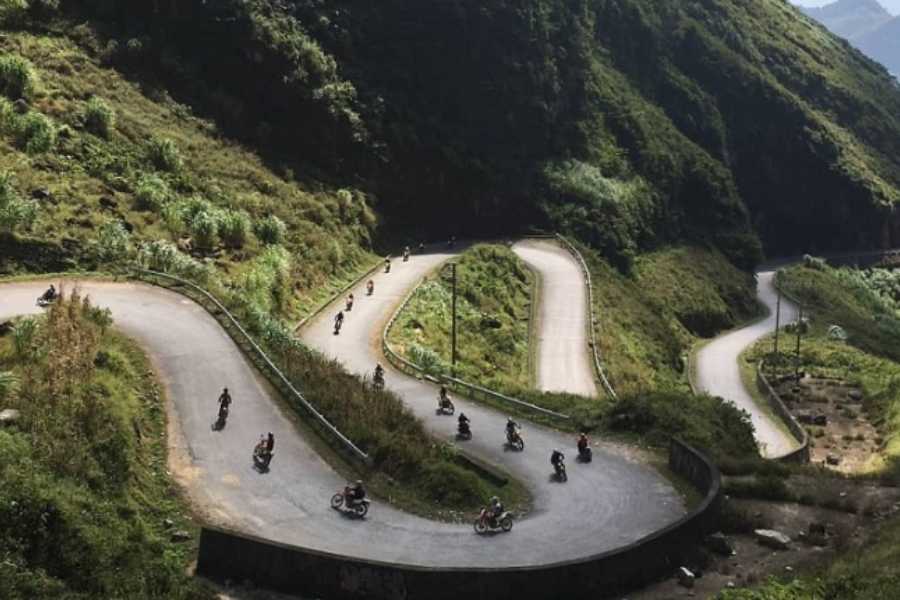
Views Over the Nho Que River That Leave Travelers Speechless
The highlight of Ma Pi Leng Pass is its panoramic views over the emerald-green Nho Que River, which snakes gracefully through the Tu San Canyon - Vietnam’s deepest. You can hike down or take a boat ride along the river for a totally different perspective of the towering limestone cliffs above.
Top experiences:
- Heaven’s Gate Viewpoint: The most famous lookout, ideal for sunrise photos.
- Tu San Canyon boat trip: A calm ride offering close-up views of the cliffs.
- Stop at ethnic markets: Markets like Meo Vac Sunday Market bring together Hmong, Tay, and Dao groups in colorful, authentic gatherings.
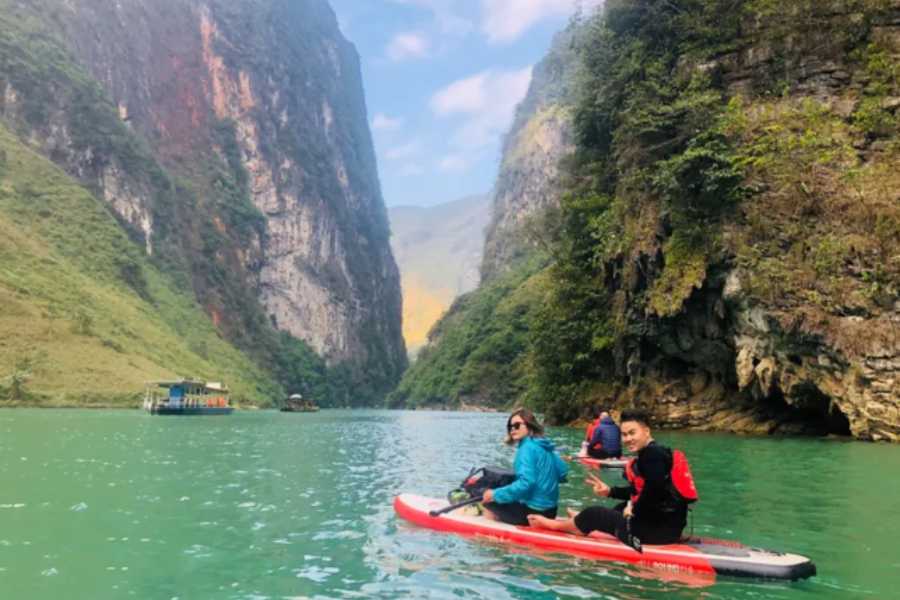
Few roads in Southeast Asia can match Ma Pi Leng for its combination of danger, beauty, and cultural immersion. For many, this is the unforgettable highlight of Ha Giang.
3. Lung Cu Flag Tower
The “North Pole” of Vietnam - A Symbol of National Pride
Lung Cu Flag Tower stands at the northernmost point of Vietnam, often referred to as the "North Pole" of the country. Perched atop Dragon Mountain (Long Son), the 33-meter tower flies a massive Vietnamese flag- the same size as the one at Ba Dinh Square in Hanoi. It’s a powerful national symbol, representing the unity and resilience of the Vietnamese people.
Visiting Lung Cu is more than just reaching a geographical milestone. The tower sits in the heart of Hmong territory, and the winding journey to get here offers a fascinating glimpse into remote village life, terraced hillsides, and distinct local architecture like the clay-walled houses of the Lo Lo people.
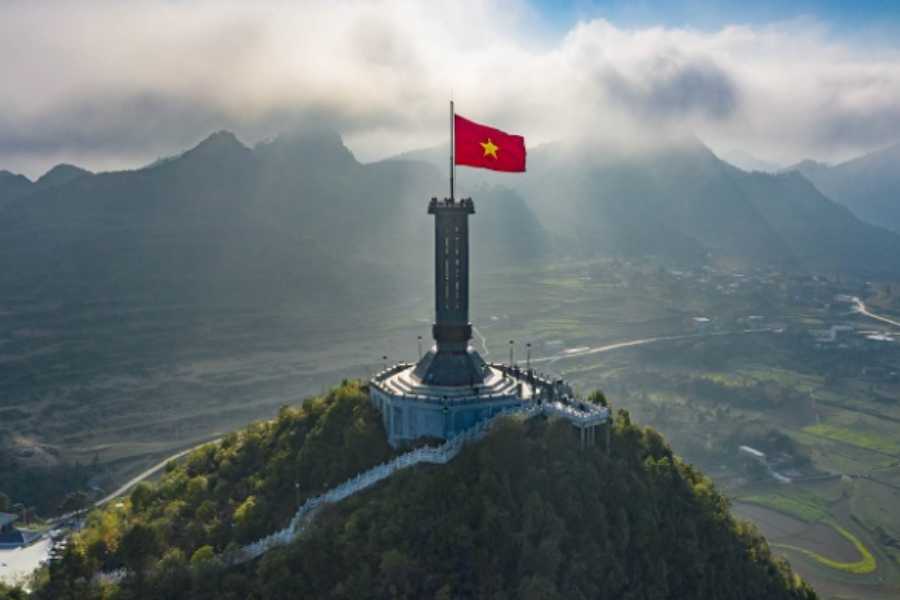
Panoramic Views of China-Vietnam Borderlands
Climb the stairs to the top of the tower and you’ll be rewarded with sweeping views across the borderlands. On clear days, you can see far into both Vietnam and China, with checkered farmland, winding trails, and tiny border guard outposts dotting the landscape.
Highlights:
- Dragon Mountain stair climb: Roughly 400 steps leading to the base of the tower, plus another spiral staircase to reach the top.
- Cultural detour: Visit Lo Lo Chai Village just beneath the tower to explore local heritage, try handmade coffee, and see traditional homes.
- Photo ops: Bring a wide-angle lens- the scenery is vast and open, especially at sunrise or sunset.
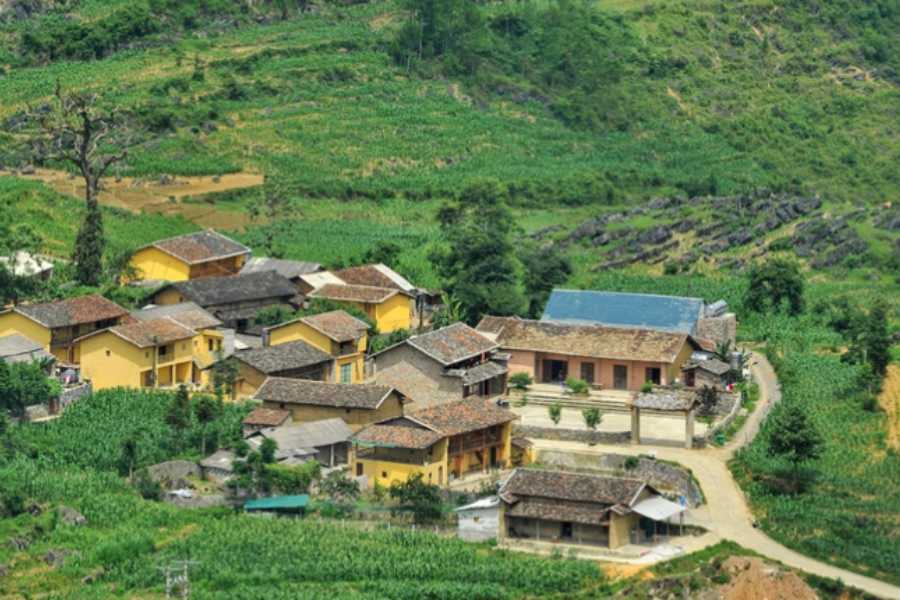
Lung Cu is not just a geographic checkpoint- it’s a deeply meaningful site that blends patriotism, culture, and natural beauty, making it a must-see stop on the Ha Giang Loop.
4. Meo Vac Town
Heart of the Hmong Highlands
Tucked deep in the karst mountains, Meo Vac Town is one of Ha Giang’s most culturally rich and geographically dramatic destinations. It lies just beyond the legendary Ma Pi Leng Pass, serving as a base for travelers exploring the farthest reaches of the province. Surrounded by steep cliffs and limestone ridges, Meo Vac is home to Hmong, Tay, Dao, and Giay communities who have preserved their traditional way of life for generations.
Despite its small size, Meo Vac has a distinct character - a rugged highland charm with earthy markets, narrow winding lanes, and homes made of mud-brick or stone. Life here feels slower, rooted in the rhythms of farming, seasonal trade, and ancestral customs.
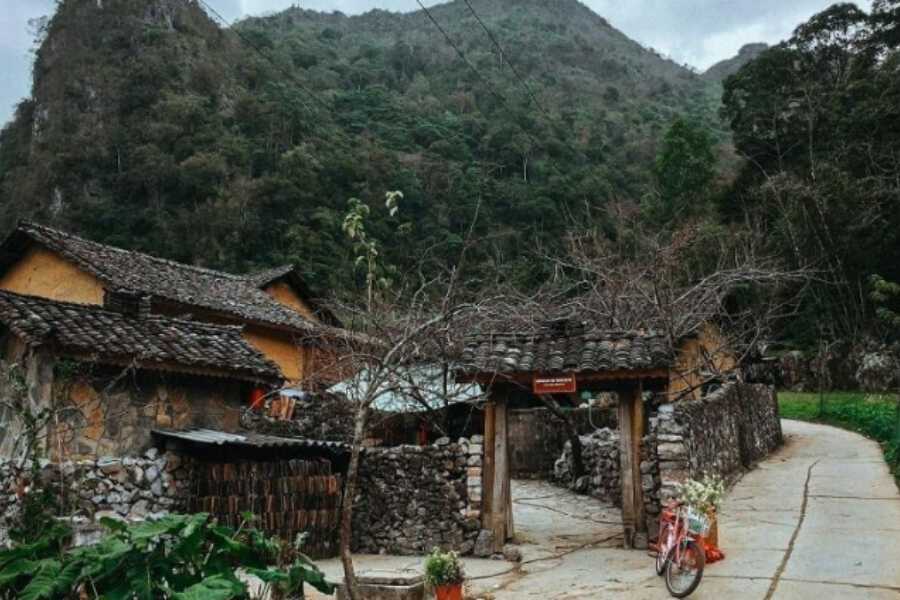
Traditional Markets, Sunday Gatherings, and Cultural Performances
The weekly Sunday Market in Meo Vac is one of the most iconic cultural experiences in Northern Vietnam. It's not just a place to buy and sell - it’s where ethnic minorities gather from all over the region, dressed in vibrant traditional clothing, to trade goods, socialize, and even find potential partners.
What to Expect:
- Ethnic fashion: Handwoven skirts, indigo jackets, silver jewelry, and colorful headscarves worn with pride.
- Market goods: Everything from buffalo and pigs to textiles, herbal medicine, corn wine, and street snacks like grilled pork skewers and bánh cuốn (steamed rice rolls).
- Cultural shows: During festivals or organized weekends, local authorities may host traditional dance, music, or Hmong flute performances.
- Homestay opportunities: For a more immersive stay, spend a night with a local family and enjoy a communal meal of mountain dishes.
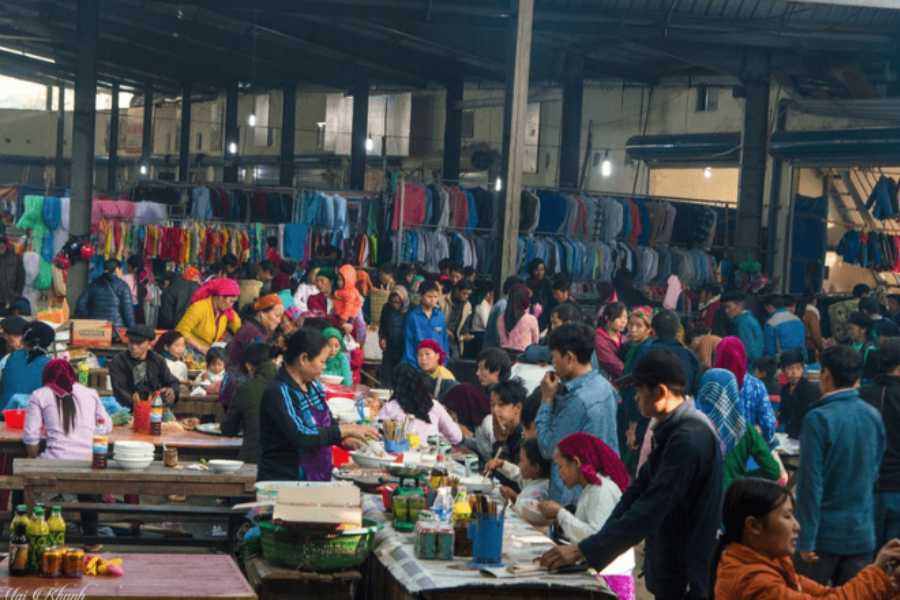
Whether you're there for the market, the misty mountain atmosphere, or a night of authentic hospitality, Meo Vac offers a genuine window into highland life - one that’s still wonderfully untouched by mass tourism.
5. Quan Ba Twin Mountains (Fairy Bosom Hills)
A Natural Wonder Wrapped in Local Legend
Located near the gateway to the Dong Van Karst Plateau, the Quan Ba Twin Mountains - affectionately known as the “Fairy Bosom Hills” - are one of Ha Giang’s most iconic natural formations. These two symmetrical, breast-shaped limestone hills rise from the middle of a lush green valley, captivating visitors with their almost surreal appearance.
Beyond the unique geology, the hills are steeped in folklore. According to local legend, the mountains were formed from the breasts of a fairy who fell in love with a Hmong man. When the heavens forced her to return to the sky, she left her breasts behind to nourish the land and people of Ha Giang - a symbol of fertility and protection that continues to be cherished today.
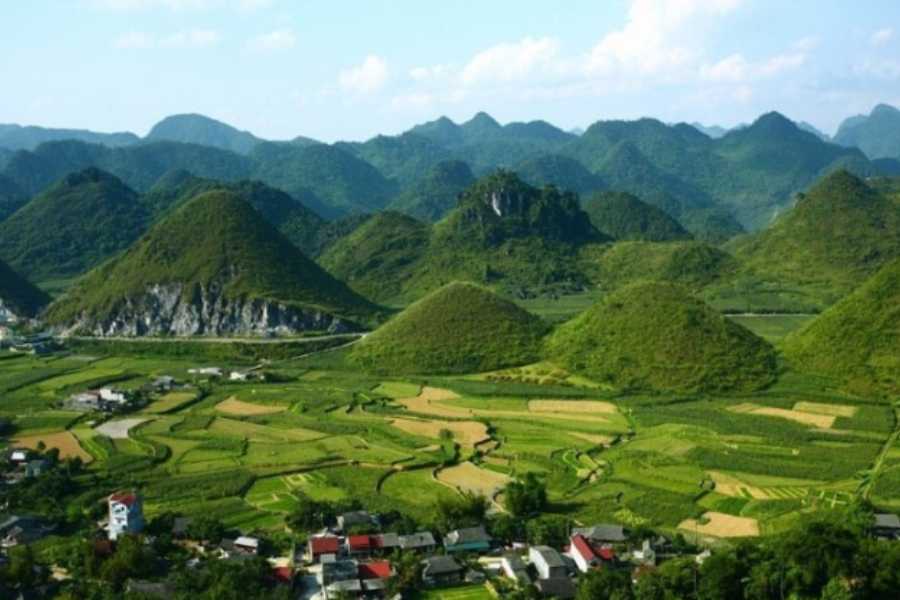
Great Stopover with Stunning Photography Opportunities
Located just outside Tam Son town in the Quan Ba District, this is a perfect scenic stop when heading north toward Yen Minh and Dong Van. The viewpoint along the main road offers sweeping views of the twin peaks and surrounding valleys dotted with rice fields and stilt houses.
Highlights:
- Photography: Best during sunrise or late afternoon when the light casts long shadows across the twin hills, enhancing their natural curves.
- Nearby attractions: Visit the Quan Ba Heaven Gate for panoramic views or explore local Hmong villages nearby for handicrafts and textiles.
- Cultural immersion: The surrounding area is home to ethnic Hmong and Dao communities, where you can stop for tea, shop for handmade embroidery, or join a local homestay.
Whether you're stopping for 30 minutes or spending the night in Tam Son, the Quan Ba Twin Mountains are a must-see for anyone seeking the intersection of natural beauty and mythical heritage.
.jpg)
6. Du Gia Village
Best Homestay Experience in Ha Giang Province
Tucked away in the valleys of Yen Minh District, Du Gia Village is a serene, less-traveled gem that offers one of the most authentic homestay experiences in all of Ha Giang. Unlike the dramatic cliffs of Dong Van or the motorbike thrills of Ma Pi Leng, Du Gia is all about slowing down and connecting with village life.
Homestays here are typically run by Tay, Hmong, or Dao families, with traditional stilt houses offering basic but comfortable accommodations. Meals are home-cooked with ingredients from local gardens or nearby farms - everything from wild herbs to mountain chicken.
Du Gia is the perfect overnight stop for travelers on the Ha Giang Loop seeking more than just scenic drives. It's a place to sit down, share rice wine with locals, and witness the rhythms of daily life in the mountains.
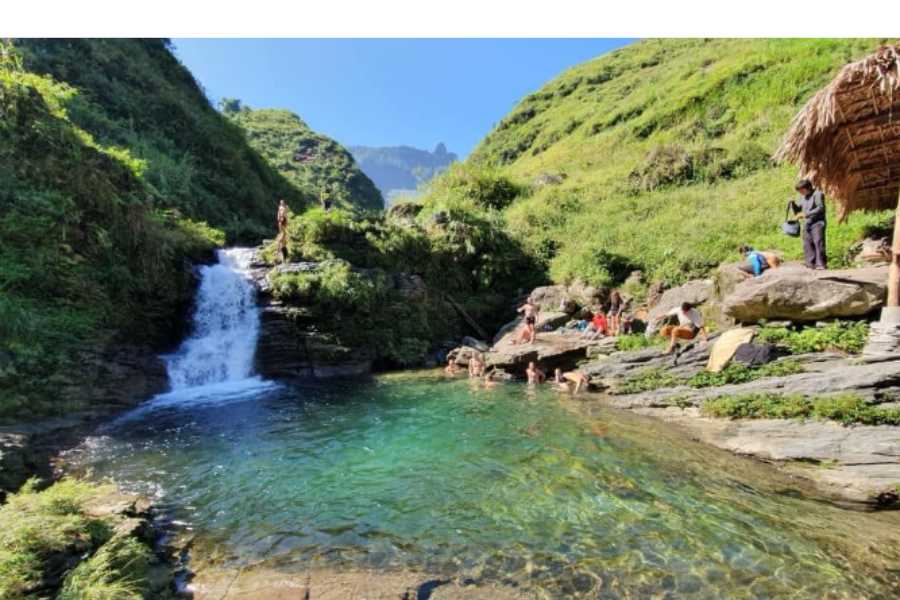
Waterfalls, Rice Fields, and Peaceful Ethnic Life
Du Gia is surrounded by terraced rice fields, bamboo forests, and hidden waterfalls. You can take a short trek to the Du Gia Waterfall, where locals swim in natural pools - especially refreshing in the warmer months.
Highlights:
- Trekking and swimming: Follow local trails through rice paddies and hills to reach quiet waterfalls and viewpoints.
- Ethnic culture: Observe or join in traditional activities like weaving, herbal bath making, or harvesting seasonal crops depending on the time of year.
- Nightlife (in a quiet way): Evenings often involve sitting around a fire, enjoying simple meals, and listening to ethnic music or stories from your hosts.
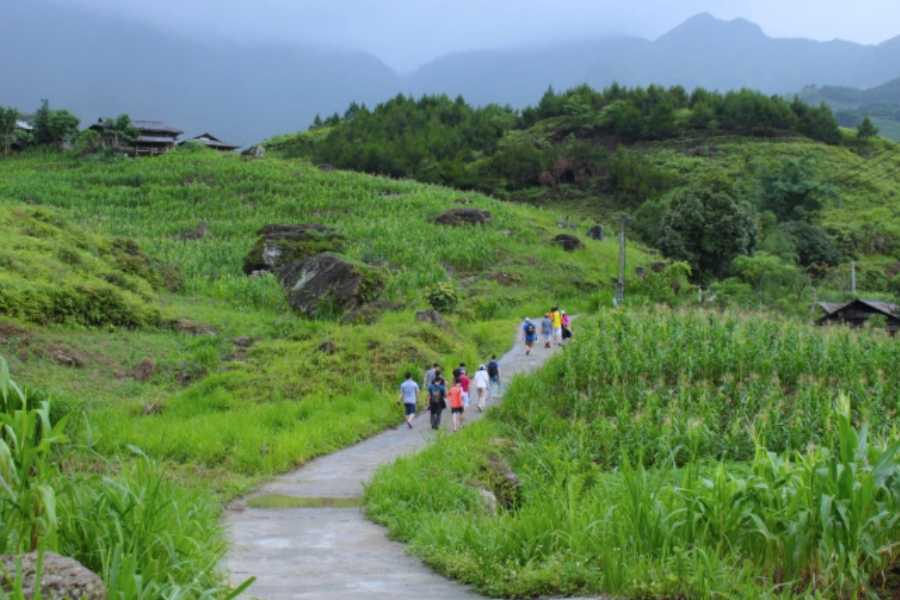
Du Gia isn’t flashy - and that’s the point. It’s one of the few places in Ha Giang where silence, simplicity, and sincerity shine the brightest.
7. Hmong King’s Palace (Vuong Palace)
Step into the Former Royal Home of the Hmong Lord
Located in Sa Phin Valley, the Hmong King’s Palace, or Vuong Palace, is a rare and atmospheric relic of Ha Giang's political past. Built in the early 20th century, this fortress-like residence was once home to Vuong Chinh Duc, a powerful Hmong leader who ruled over the region during the French colonial era.
The palace offers a fascinating look into the wealth, influence, and social structure of Hmong society at the time. Its remote setting, surrounded by limestone peaks and flanked by high stone walls, makes it feel like a hidden stronghold - and for many years, it was.
Visitors can walk through the preserved courtyards, see the family’s old living quarters, and imagine what life was like for the Hmong aristocracy. Informational signs (and sometimes local guides) share the story of how the family navigated French relations, opium trade politics, and shifting alliances.
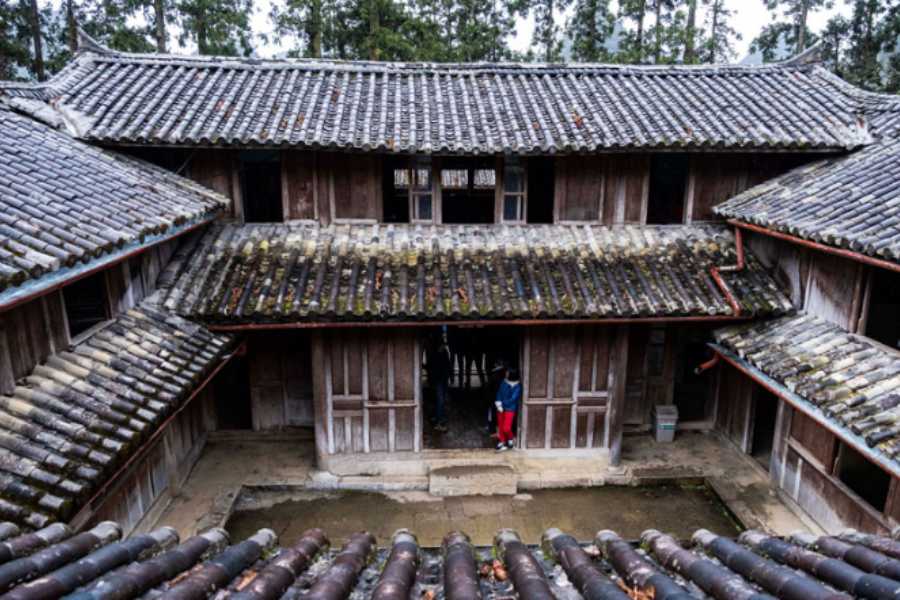
A Blend of French-Chinese-Hmong Architecture and History
What makes Vuong Palace especially unique is its architectural fusion. You’ll find:
- Chinese-style curved roofs with dragon motifs
- French colonial touches in stone masonry and balconies
- Hmong symbols carved into wood beams and doorways
Constructed with green stone and timber, the palace is cool and quiet even in summer, reflecting both the aesthetic sensibilities and the defensive concerns of the era. Every corridor and staircase tells a part of the Hmong cultural narrative - one of pride, resilience, and adaptation.
This is more than just a photo stop - it’s a cultural landmark that bridges Ha Giang’s past and present, nestled in the highlands where history still feels alive.
8. Nho Que River and Tu San Canyon
Hidden Gem for Boat Trips and Kayaking Below Ma Pi Leng
Tucked deep below the cliffs of Ma Pi Leng Pass, the Nho Que River winds through Ha Giang like a jade ribbon - calm, narrow, and otherworldly in its beauty. One of the most memorable ways to experience this hidden gem is by taking a boat ride or kayak trip along the river, especially through the breathtaking Tu San Canyon, Vietnam’s deepest gorge.
.jpg)
You can access the river via a short but steep hike or a motorbike ride to Ta Lang Wharf. From there, small wooden boats operated by local families take you into the heart of the canyon, where towering limestone cliffs soar up to 800 meters above. The turquoise water, sheer rock faces, and tranquil atmosphere make it a striking contrast to the rugged mountains above.
This is one of the rare places in Vietnam where silence, scale, and scenery all converge. It’s a photographer’s dream - but even more so, a moment of pure stillness in the wild.
One of Southeast Asia’s Most Dramatic River Gorges
The Tu San Canyon isn’t just a visual marvel - it’s a geological wonder shaped over millions of years by tectonic movement and erosion. Its vertical walls, layered stone textures, and unspoiled vegetation make it one of the most dramatic river gorges in Southeast Asia, often compared to lesser-known parts of southern China.
Whether you’re drifting slowly under the shadows of the cliffs or paddling under your own power, this experience is unlike anything else in Vietnam. It’s raw, peaceful, and awe-inspiring - and for many, the highlight of the Ha Giang Loop.
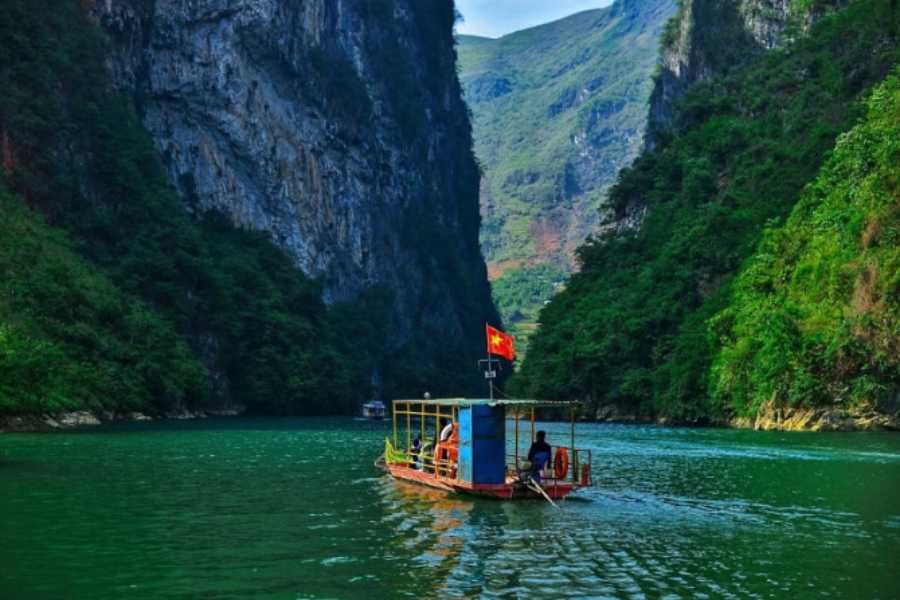
Travel Tips for Visiting Ha Giang
When to Go: Best Seasons for Weather and Festivals
The ideal time to visit Ha Giang is during the dry season from October to April, when the weather is cool, clear, and perfect for exploring the mountainous terrain. October and November are especially popular for the flower blooming season, with fields of buckwheat and sunflowers coloring the landscape. Spring months like March and April bring mild temperatures and vibrant ethnic festivals such as the Khau Vai Love Market.
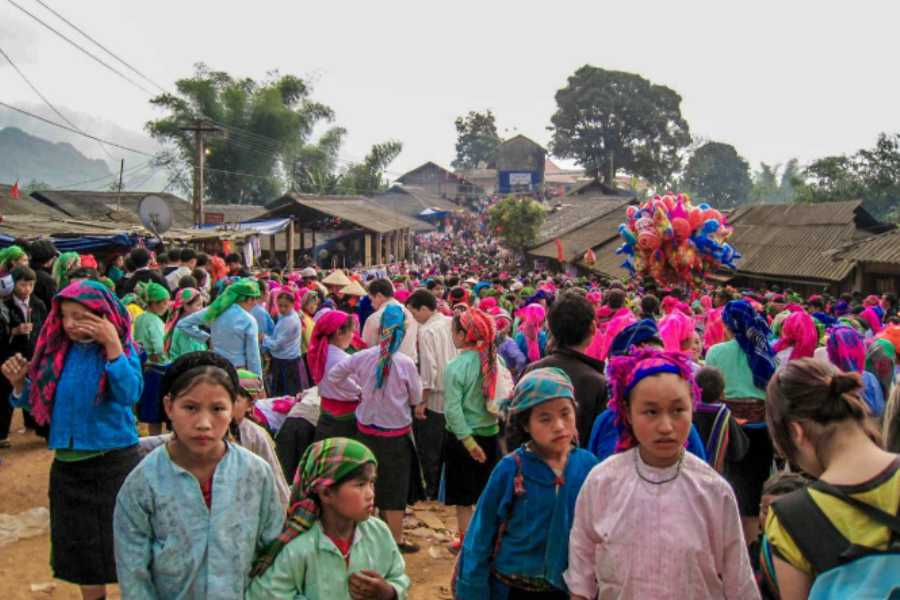
Avoid the rainy season (May to September) as roads can become slippery and river levels rise, making boat trips difficult. Before you set off, consider preparing a detailed packing list for Vietnam to ensure you’re ready for both mountain chill and sunny valleys. However, if you don’t mind the occasional shower, the lush green scenery during this time is breathtaking.
How to Travel: Motorbike Loop vs. Car Tour
The classic way to experience Ha Giang is the motorbike loop, which offers flexibility and access to remote spots like Dong Van, Meo Vac, and the Ma Pi Leng Pass. This adventurous option suits experienced riders comfortable with winding mountain roads. Rentals are available in Ha Giang town with helmets and safety gear.
For those less confident on two wheels, guided car tours or private transfers are a comfortable alternative. They offer a more relaxed pace and can include English-speaking guides to enhance your understanding of local culture and history. Booking through the best travel agency in Vietnam can help arrange safe transport, knowledgeable guides, and authentic local experiences.
Where to Stay: Eco-Lodges, Homestays, and Town Guesthouses
Accommodation options in Ha Giang range from rustic homestays in ethnic villages, offering immersive cultural experiences, to eco-lodges nestled in nature with modern comforts. Town guesthouses in Ha Giang or Dong Van provide convenient bases with clean rooms and local hospitality.
Booking homestays through reputable local operators ensures your visit supports community development. For a blend of comfort and authenticity, seek out guesthouses that prioritize sustainability and work closely with local ethnic groups.
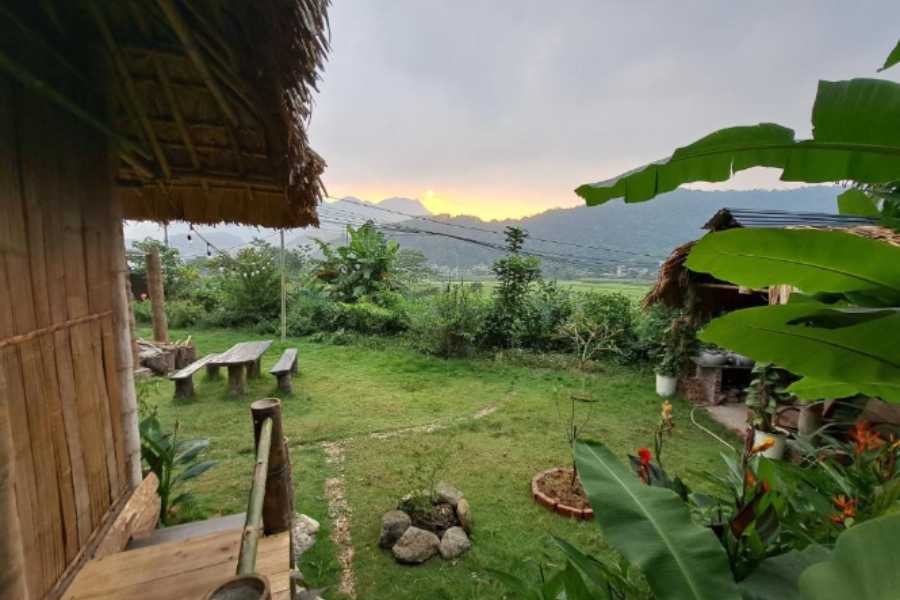
Final Thoughts: Is Ha Giang Worth the Journey?
A Rewarding Destination for Curious and Courageous Travelers
Ha Giang stands out as one of Vietnam’s most breathtaking and authentic destinations. Its rugged landscapes, rich ethnic diversity, and off-the-beaten-path appeal make it a rewarding choice for travelers who seek adventure beyond typical tourist routes. The dramatic mountain passes, traditional markets, and warm local communities offer experiences that linger long after the trip ends. While the journey can be challenging, the unique sights and cultural encounters make every effort worthwhile. Many Vietnam holiday packages now include Ha Giang in their itineraries, offering travelers a chance to combine it with other iconic northern destinations.
Combining Ha Giang with Sapa or Cao Bang for the Ultimate North Vietnam Tour
To maximize your Northern Vietnam exploration, consider pairing Ha Giang with nearby destinations like Sapa, known for its famous rice terraces and hill tribe cultures, or Cao Bang, home to the spectacular Ban Gioc Waterfall and pristine nature reserves. Together, these regions form a diverse itinerary that showcases the full spectrum of Northern Vietnam’s natural beauty and cultural richness, perfect for travelers with time to dive deep into this fascinating corner of the country.










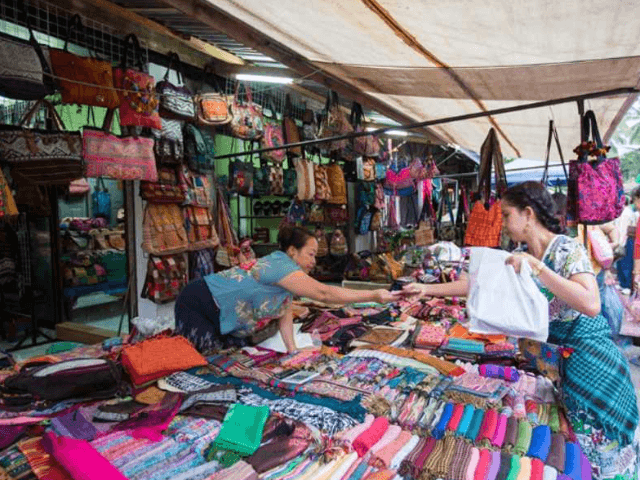
.jpg&w=828&q=75)
